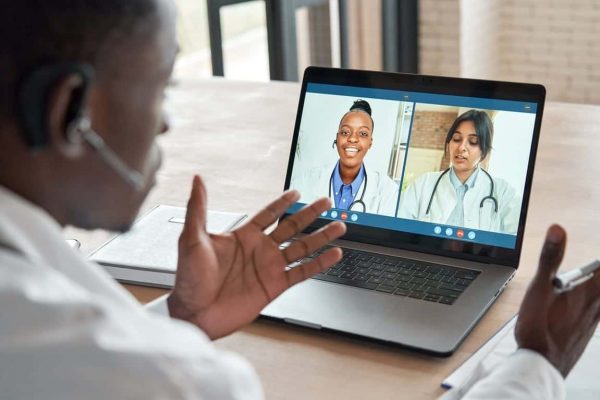
In a perfect healthcare system, everyone gets treated when they start to get sick. Unfortunately, this is a system that does not currently exist. This leaves a lot of people falling through the cracks and not receiving the healthcare they need.
Remote patient monitoring systems are helping close that gap for the 45% of Americans suffering from a long-term disease. They allow us to keep track of multiple patients and notify those who need healthcare when it is time to start treatment.
These systems are helping put healthcare in the hands of the people.
Remote patient monitoring has emerged as a game-changer in healthcare. Geographical barriers can often limit patients’ ability to regularly visit healthcare facilities. This interrupts their treatment plans and leading to poorer health outcomes.
However, with remote patient monitoring, healthcare organizations can bridge this gap and extend their services to patients in remote areas.
Through telehealth technology, healthcare professionals can monitor patients with chronic conditions. Patients are provided with wearable devices that capture vital signs like blood pressure, blood glucose levels, or heart rate.
These are then transmitted to healthcare providers.
This real-time data enables healthcare professionals to proactively manage patients, intervening promptly if any adverse changes occur. By monitoring patients, they can identify potential complications and offer timely interventions. This reduces the need for emergency room visits or hospitalizations.
This enhanced access to care is particularly beneficial for vulnerable patient populations, such as the elderly or individuals with mobility limitations. They can receive quality care in the comfort and safety of their homes. Therefore, they elimiate the need for physical transportation, which can be challenging for many.
Traditionally, healthcare has been reactive. Patients seek care only when they experience symptoms or complications.
However, patient monitoring systems shift the focus towards proactive healthcare management. By continuously monitoring and analyzing patient data, healthcare providers can detect early warning signs. This allows them to intervene before things escalate.
Through remote patient monitoring, patients’ health metrics such as blood pressure, glucose levels, or weight can be closely monitored. These measurements, combined with information about medication adherence and lifestyle patterns, provide valuable insights into overall health.
Healthcare professionals can set thresholds and receive alerts if any values fall outside the normal range. They can then take timely action and prevent potential complications.
For instance, a patient with diabetes who is monitored may have their blood glucose levels automatically transmitted to their healthcare provider. If the levels indicate that the patient is consistently outside their target range, a healthcare professional can reach out.
They can then offer guidance on medication adjustments, dietary changes, or lifestyle modifications to help the patient maintain optimal glucose control.
Patient engagement is a critical aspect of successful healthcare delivery. Remote patient monitoring offers a unique opportunity to actively involve patients in their own care.
Through wearable devices and mobile applications, patients can track their health metrics, receive personalized feedback, and access educational resources related to their conditions.
When patients can visualize and monitor their health parameters, they become more proactive in managing their well-being. With remote patient monitoring, patients can gain a deeper understanding of how their daily actions such as physical activity or dietary choices, impact their health outcomes. This awareness motivates patients to make positive changes.
Remote patient monitoring allows also for seamless communication between patients and healthcare providers through secure messaging platforms. Patients can ask questions and receive personalized guidance from their healthcare team.
This increased patient engagement leads to better health outcomes as patients become active participants in managing their own health.
The rising costs of healthcare have become a significant concern for patients and healthcare organizations alike. Remote patient monitoring has the potential to alleviate this burden by:
By closely monitoring patients’ health, healthcare providers can intervene when needed.
Studies have shown that remote patient monitoring programs can lead to significant reductions in hospital readmissions for conditions such as heart failure or chronic obstructive pulmonary disease (COPD). This results in substantial cost savings for healthcare systems.
Additionally, remote patient monitoring reduces transportation costs for patients, particularly those living in remote areas or with limited mobility. The need for frequent visits to healthcare facilities can be a significant financial burden.
With remote patient monitoring, patients can receive regular care without leaving their homes. This makes healthcare more accessible.
Effective care coordination is vital to ensure seamless transitions between different levels of care and the delivery of holistic healthcare. Remote patient monitoring plays a crucial role in facilitating enhanced care coordination among healthcare providers.
Healthcare professionals can securely share patient data, test results, and treatment plans in real time. This seamless communication allows for comprehensive evaluations and collaborative decision-making. That ensures that all involved providers are informed about a patient’s health status and progress.
As a result, patients receive more consistent and coordinated care across different healthcare settings.
For example, remote patient monitoring helps bridge the gap between primary care providers and specialists. The primary care provider can remotely monitor the patient’s health condition and share essential data with the specialist. The expert can then make their own recommendations.
This integrated approach improves overall patient outcomes and prevents unnecessary delays or gaps in care.
With its ability to enhance access to care, promote proactive healthcare management, increase patient engagement, save costs, and improve care coordination, remote patient monitoring has become an invaluable tool for healthcare organizations.
By leveraging telehealth technology and patient monitoring systems, healthcare providers can extend their services beyond traditional healthcare settings, delivering high-quality care to patients in the comfort of their homes.
To learn more about remote patient monitoring and its applications in healthcare, visit the BlueStar Telehealth Blog and discover how our solutions can benefit your organization and patients.